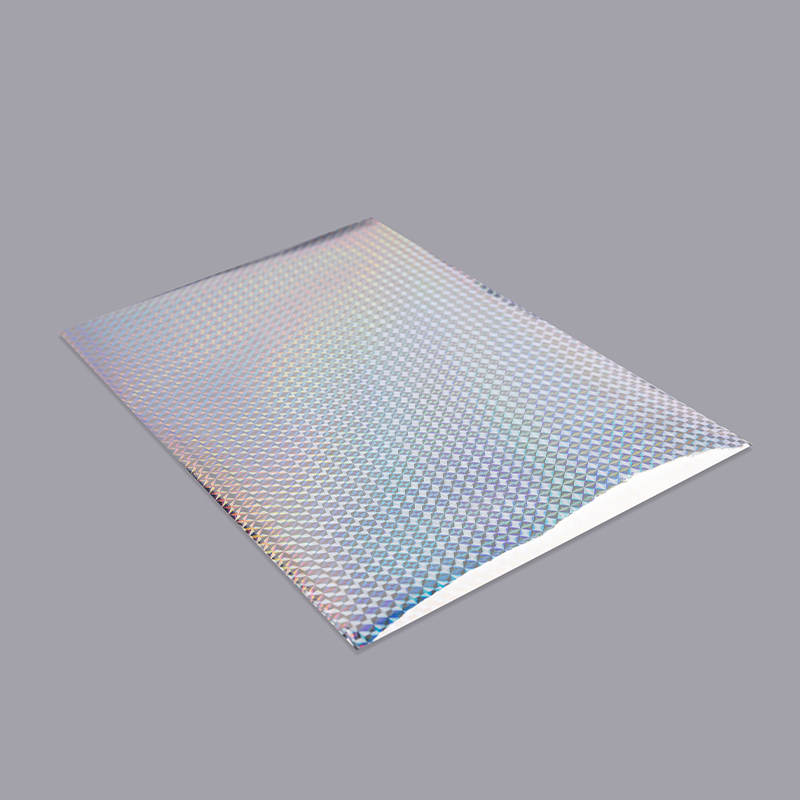The impact of metallization on the reflective properties of Holographic Film is significant and plays a crucial role in creating the holographic effect. Metallization involves the deposition of a thin layer of metal, typically aluminum, onto the film's surface. This metallic layer enhances the film's reflectivity, and the optimization of reflectivity in varying lighting conditions involves several considerations:
Interference and Reflective Properties:
Interference Phenomenon: The metallized layer creates an interference phenomenon when exposed to light. This occurs as light waves reflect off the metallic surface and interfere with each other, leading to constructive and destructive interference.
Reflective Properties: The interference patterns generate vibrant, iridescent colors characteristic of holographic effects. Reflectivity is a crucial property in ensuring that these patterns are vivid and visually striking.
Optimizing Reflectivity:
Metal Thickness: The thickness of the metallic coating influences reflectivity. Different thicknesses can produce varied holographic effects. Thinner coatings may create more delicate patterns, while thicker coatings can enhance brightness and intensity.
Uniformity of Coating: Ensuring uniformity in the metallized layer is essential for consistent reflectivity. Irregularities in the coating can lead to variations in holographic patterns and brightness.
Lighting Conditions:
Angle of Incidence: Reflectivity can be optimized by considering the angle of incidence of light. Adjusting the angle at which light interacts with the holographic film can enhance or alter the holographic effects. This feature is often leveraged to create dynamic visual displays.
Diffractive Grating Structure:
Microscopic Structures: The metallization process is often accompanied by the creation of microscopic structures, such as diffractive gratings, on the film's surface. These structures diffract light in specific ways, contributing to the overall holographic appearance.
Pattern Design: The design and precision of these gratings impact the film's ability to diffract light effectively, influencing both the reflective properties and the holographic pattern.
Film Substrate Transparency:
Base Layer Clarity: The transparency and clarity of the film's base layer, typically made of polyester (PET), contribute to overall reflectivity. A clear base layer allows light to penetrate and interact with the metallic coating more effectively.

Advanced Coating Techniques:
Advanced Metallization Processes: Innovations in metallization techniques, such as vacuum deposition or sputtering, can enhance the precision and control of the metallic coating. These advanced processes contribute to more uniform and optimized reflectivity.
Multi-Layer Coatings: Some holographic films employ multiple layers of different materials to achieve specific reflective properties, allowing for customization based on application requirements.
Surface Finish and Texture:
Smoothness: The smoothness of the metallized surface is crucial for maximizing reflectivity. Smooth surfaces ensure that light waves reflect uniformly, contributing to a cohesive holographic effect.
Surface Texture Effects: Introducing controlled textures or finishes to the metallized layer can alter the way light interacts with the film, providing opportunities for unique visual effects.
Application-Specific Adjustments:
Customization for Environments: Depending on the intended application and lighting conditions, holographic films can be customized to optimize reflectivity for specific environments. This might involve adjustments in the metallic coating's properties or the holographic pattern design.
Reflectivity can be optimized through precise control of metal thickness, uniformity of coating, consideration of lighting conditions, incorporation of diffractive structures, and advancements in coating techniques. These factors collectively contribute to the brilliance and visual appeal of holographic patterns, making the film suitable for a wide range of applications, including security features, packaging, and decorative displays.

 English
English Español
Español русский
русский Français
Français عربى
عربى











